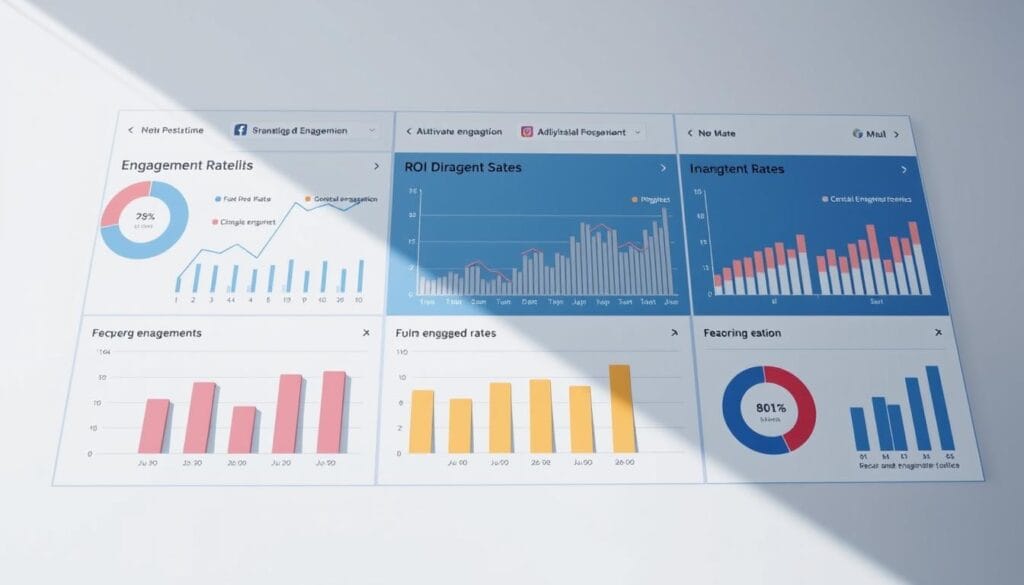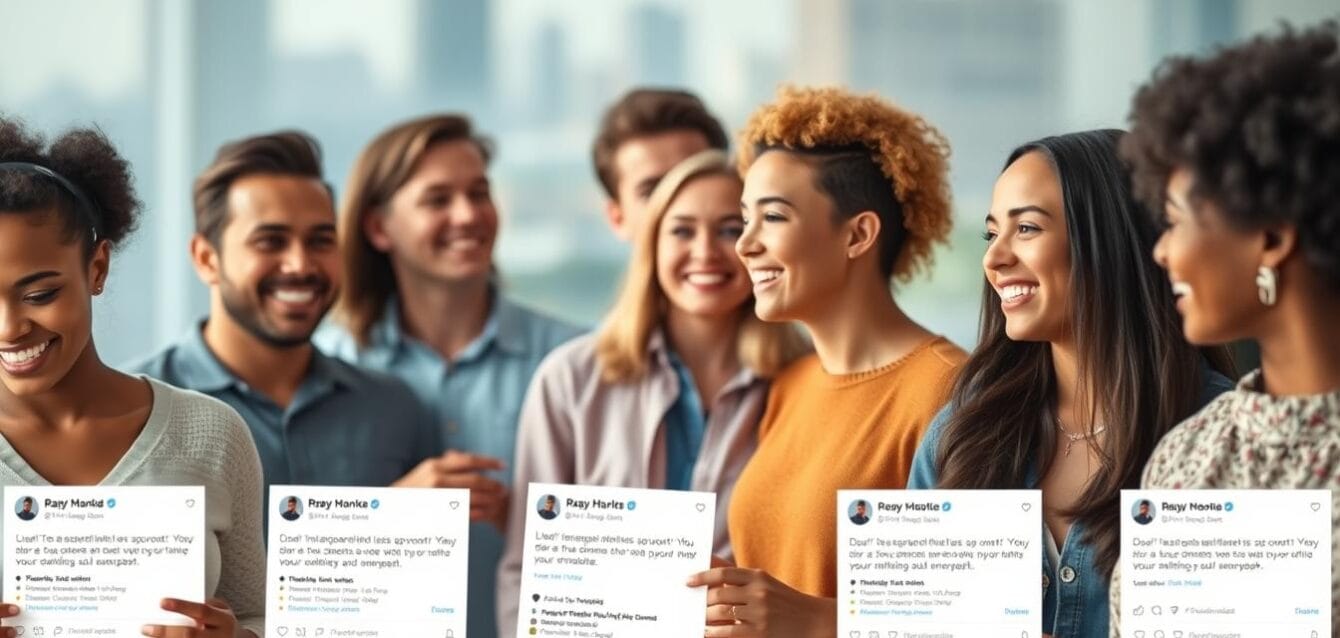Fact: the influencer market hit $24B in 2024 and has more than tripled since 2019 — yet many high-ticket brands still pay top dollar for low-return reach.
We see the gap clearly: mega reach often costs more and converts less. We promise data-backed guidance and an ROI-first playbook to change that.
Here’s what we open for you: a precision strategy that shows why smaller creators deliver higher engagement and stronger ROI than celebrity accounts. You will learn who to partner with, what content to commission, and how to brief for measurable outcomes.
We translate the $24B opportunity into a sane, forecastable plan for premium brands. Expect clear metrics your CFO will trust and a next-step CTA to deploy our Growth Blueprint and scale on a tighter budget.
Key Takeaways
- Smaller creators often drive better conversion than costly reach-focused influencers.
- Relevance and audience fit beat follower vanity metrics for lasting awareness.
- We provide a results-first framework: selection, content, brief, and budget allocation.
- Use specific content formats for compounding lift: carousels and seamless product placement.
- Measure CAC, LTV, and forecastable outcomes with transparent media metrics.
The shift in influencer marketing: Smaller creators, higher engagement, smarter spend
The economics of influencer marketing have shifted: focused audiences now outperform mass reach in both cost efficiency and conversion. The market tripled since 2019 to $24B in 2024, and that growth exposed what matters: relevance, not just raw followers.
Macro talent still moves brand awareness, but it often dilutes precision. Smaller creators—micro and nano—bring tighter communities and higher engagement per post.
For high-ticket brands, the trap is familiar: big reach with weak relevance and rising CPMs. We solve that by prioritizing audience alignment and clear business metrics.
- Market maturity: follower totals fell in priority; targeted audience fit raised engagement rates and budget efficiency.
- Niche converts: tight communities act on timely, contextual messages across social media and wider media.
- Sequenced scale: validate with high-fit creators, then amplify proven offers with selective macro reach.
Our approach treats posts as measurable media, not vanity. We brief for revenue signals—saves, shares, comments—and design tests that prove ROI before scaling spend.
Understanding influencer tiers: Mega, macro, micro, nano—what really matters for your brand
Selecting the right creator type starts with clear definitions and business intent. We map each tier by follower range and strategic fit so your team spends for outcomes, not applause.

Here is a concise breakdown of types and where they belong in a premium marketing plan.
- Mega (1M+ followers): Celebrity-scale reach. Best for broad awareness waves. High rates and lower uniformity in audiences.
- Macro (100K–1M): Category voices on social media that can steer conversations. Use when you need scale with some expertise.
- Micro (1K–100K): Niche authorities with uniform audiences. Ideal for precision activation and measurable conversion.
- Nano (<10K): Hyper-local authenticity and peer perception. Exceptional for grassroots advocacy and community lift.
“Don’t chase followers—chase relevance and alignment.”
Assess audiences, not just numbers: age, income, geography, psychographics, and category interest drive true engagement and rates.
Our guidance: use macro for awareness, then deploy micro and nano to convert and deepen value. Align tier selection with offer type, budget, and target segments for forecastable ROI.
Data that settles the debate: Engagement rates and ROI drivers you can bank on
Concrete benchmarks remove guesswork from influencer selection. Across 17,715 activations we see clear, repeatable advantages for smaller tiers and precision briefs.

Benchmarks: nano (1K–10K) average engagement rate 2.71%, micro- (10K–50K) 1.81%, mid-tier (50K–100K) 1.24%. These rates prove targeted audiences drive better interaction than follower scale.
Compensation matters. Gifted collaborations return 2.19% vs. paid at 1.94% — a +12.9% lift. In like-for-like brand tests across 415 brands, gifted content earned 215% more views.
Precision wins. Matching creator niche to offer increases engagement by +13.59% and views by +81.39%. Specifying the target audience delivers an extra +20.92% engagement.
- Format: carousels average 2.62% engagement; Reels drive views. Use both with intent.
- Integration: seamless product placement boosts engagement +89.93%; light CTAs raise interaction by ~70%.
- Signals: prioritize saves, shares, and watch time over likes-only metrics.
“Use these benchmarks to forecast outcomes by tier, format, and compensation — then negotiate with confidence.”
We turn these numbers into an operating system: testing matrices, audience filters, and reporting cadences that scale what works and cut what doesn’t.
Micro- & Nano-Influencer Campaigns: When and why to choose them over macro
Smaller creators convert when precision matters and budgets demand predictability. We prioritize creators who act as niche opinion leaders and whose followers match your buyer profile.
Goals include rapid validation, trust-building, and direct sales activation. For high-ticket offers, these creators validate positioning and sharpen messaging before any macro amplification.
Goals and use cases
Conversion and trust: use cohorts of creators to prime demand and shorten consideration windows.
Community depth: deploy multiple posts to compound awareness and nurture lifetime value.
Platform and content considerations
Match format to the funnel. Carousels drive engagement momentum. Reels deliver efficient reach and discovery. UGC and tutorials provide social proof and move prospects toward purchase.
- Start gifted-first to stretch budget and scale throughput.
- Reserve paid layers for creators and formats that prove they drive sales.
- Activate dozens of small creators in waves to outperform a single macro flight.
“Prioritize creators whose audience mirrors your ideal buyer — that is how you build a higher-quality pipeline.”
Blueprint for choosing the right creators: From target audience to “choosing right” fit
We reverse-engineer creator fit from buyer behaviors, not follower counts. Start by specifying your target audience in clear terms: demographics, psychographics, and platform habits. This clarity improves engagement by 20.92% and focuses spend where it converts.
Define your audience and niche
List age, income, location, and device patterns. Note the platforms where your audience spends time and what content they trust. Be specific—vague briefs waste budget.
Evaluate engagement vs. vanity
Prioritize comments, shares, saves, and watch time over raw follower totals. Check recent rates and flagged anomalies. A smaller, active audience beats a large passive one.
Brand alignment and due diligence
Audit past partnerships, sentiment in comments, and content quality. Verify audience composition by geography and income before negotiating.
- Scorecard: weight engagement, niche fit, professionalism, and platform strengths.
- Deliverables: set timelines, usage rights, and measurable KPIs up front.
“Select creators who already serve your buyer — that is how you scale predictable results.”
Campaign architecture and content strategy for higher engagement
Build your campaign architecture around precise business goals and fast feedback. We map every creative decision to awareness, engagement, or sales KPIs so each post is accountable to CAC and LTV targets.
Set clear goals and KPIs
Declare primary objectives: brand awareness, engagement lift, or direct sales. Attach measurable KPIs: CPM, cost per engagement, view-to-click rate, and incremental sale value.
Example: target a 2.5% lift in saves/shares and a CAC below your threshold before scaling spend.
Brief creators for natural integration
Require seamless product placement—integrated content drives +89.93% engagement. Keep on-screen CTAs minimal; subtle direction preserves momentum and improves watch time.
Mandate FTC disclosure language and platform-native tags even for gifted partnerships to protect brand compliance.
Content mix and testing
Use carousels to concentrate engagement (2.62% avg). Use Reels to expand reach and discovery. Add faceless and voiceover variants to test performance lift.
Rotate hooks, angles, and formats. Prioritize saves and shares as leading indicators of revenue lift.
Scale with cohorts and feedback loops
Deploy many smaller creators in waves rather than a few macro posts. This spreads risk, improves targeting, and lowers cost per engagement.
Standardize weekly readouts, creative pivots, and asset libraries so winning content is replicated fast and underperformers are retired.
| Objective | Primary KPI | Recommended Format |
|---|---|---|
| Brand awareness | Impressions, reach | Reels, short-form video |
| Engagement | Saves, shares, comments | Carousels, faceless/voiceover clips |
| Direct sales | Cost per sale, incremental LTV | Integrated product posts, tracked links |
“We operationalize briefs, templates, and dashboards so influencer media becomes predictable and scalable.”
Budgets, pricing, and measurement for high-ticket brands
High-ticket brands win when budgets map directly to customer acquisition math. We structure spend so each creator output has a measurable hypothesis and a CFO-grade forecast.
Budgeting smart: gifted-first, when to pay, and affiliate layers
Lead with gifted for nano and micro- influencers to scale volume and content velocity. Gifted work averages 2.19% engagement vs. paid at 1.94% and drove +215% views in same-brand tests.
Pay per post when creators and formats show repeatable lift. Add affiliate layers to tie commissions to tracked sales and preserve margin.
Forecasting and tracking: CPE, per post, per view, and per incremental sale
Model cost per engagement, per post, per view, and cost per incremental sale by tier and format. Use carousels to drive engagement and Reels for reach.
Track: saves, shares, comments, watch time, and assisted conversions to link engagement to sales.
Optimization loops: test targeting, creators, formats, and offers
Use creator cohorts to gain statistical power. Run weekly tests on hooks and offers, reallocate spend to the strongest narratives, then scale selectively with macro where needed.
“Treat creator media as repeatable, testable media and scale only what proves profitable.”
| Layer | When to use | Primary KPI |
|---|---|---|
| Gifted | Nano & micro first | Engagement rate / views |
| Paid (per post) | Proven creators & formats | Cost per engagement / reach |
| Affiliate | Scale revenue with low upfront cost | Cost per incremental sale |
Conclusion
When ROI matters, targeted creator strategies beat one-off reach plays every time.
The evidence is decisive: smaller creators with the right audience deliver higher engagement and more efficient brand awareness and conversion. Gifted content often outperforms paid posts on views and interaction, and specifying niche plus audience lifts results materially.
Winning work is engineered: set clear goals, choose right by fit, brief for seamless product integration, and run cohort-based tests that iterate weekly. Systems—scorecards, briefs, and dashboards—turn content into predictable media that funds growth, not vague reach.
If you keep paying premium per post without proof, you’re funding your competitor’s advantage. Claim your Macro Webber Growth Blueprint now. We’ll audit your setup, map a choosing right creator matrix, and design a 90-day plan. Slots are limited—move now to lock priority onboarding.



